 CubicSDR is a cross-platform Software-Defined Radio application which allows you to navigate the radio spectrum and demodulate any signals you might discover. It currently includes several common analog demodulation schemes such as AM and FM and will support digital modes in the future. Many digital decoding applications are available now that can use the analog outputs to process digital signals by “piping” the data from CubicSDR to another program using software like Soundflower, Jack Audio
CubicSDR is a cross-platform Software-Defined Radio application which allows you to navigate the radio spectrum and demodulate any signals you might discover. It currently includes several common analog demodulation schemes such as AM and FM and will support digital modes in the future. Many digital decoding applications are available now that can use the analog outputs to process digital signals by “piping” the data from CubicSDR to another program using software like Soundflower, Jack Audio
 Allegro is a cross-platform library mainly aimed at video game and multimedia programming. It handles common, low-level tasks such as creating windows, accepting user input, loading data, drawing images, playing sounds, etc. and generally abstracting away the underlying platform. However, Allegro is not a game engine: you are free to design and structure your program as you like. Allegro has the following additional features: Supported on Windows, Linux, Mac OSX, iPhone and Android Use
Allegro is a cross-platform library mainly aimed at video game and multimedia programming. It handles common, low-level tasks such as creating windows, accepting user input, loading data, drawing images, playing sounds, etc. and generally abstracting away the underlying platform. However, Allegro is not a game engine: you are free to design and structure your program as you like. Allegro has the following additional features: Supported on Windows, Linux, Mac OSX, iPhone and Android Use
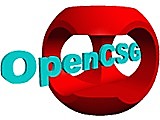 OpenCSG is a library that does image-based CSG rendering using OpenGL. CSG is short for "constructive solid geometry" and represents a modeling technique for composing shapes with 3D-primitives which are combined using volumetric boolean operations. Image-based CSG rendering means rendering CSG shapes without calculating their surface in object-space. Instead, the image of a CSG shape is composed directly in the frame-buffer of the graphics hardware by rather sophisticated stenciling and z-buff
OpenCSG is a library that does image-based CSG rendering using OpenGL. CSG is short for "constructive solid geometry" and represents a modeling technique for composing shapes with 3D-primitives which are combined using volumetric boolean operations. Image-based CSG rendering means rendering CSG shapes without calculating their surface in object-space. Instead, the image of a CSG shape is composed directly in the frame-buffer of the graphics hardware by rather sophisticated stenciling and z-buff
 A planetarium software that renders a 3D simulation of the night sky. * default catalogue of over 600,000 stars * extra catalogues with more than 177 million stars * default catalogue of over 80,000 deep-sky objects * extra catalogue with more than 1 million deep-sky objects * asterisms and illustrations of the constellations * constellations for 20+ different cultures * images of nebulae (full Messier catalogue) * realistic Milky Way * very realistic atmosphere, sunrise and sunset * the plane
A planetarium software that renders a 3D simulation of the night sky. * default catalogue of over 600,000 stars * extra catalogues with more than 177 million stars * default catalogue of over 80,000 deep-sky objects * extra catalogue with more than 1 million deep-sky objects * asterisms and illustrations of the constellations * constellations for 20+ different cultures * images of nebulae (full Messier catalogue) * realistic Milky Way * very realistic atmosphere, sunrise and sunset * the plane
 If you are not familiar with Open Inventor, it is a scene graph based, retained mode, rendering and model manipulation, C++ class library, originally designed by SGI. It quickly became the de facto standard graphics library for 3D visualization and visual simulation software in the scientific and engineering community after its release. It also became the basis for the VRML1 file format standard. Several books exists on the subject of Open Inventor, most notably The Inventor Mentor, and The Inve
If you are not familiar with Open Inventor, it is a scene graph based, retained mode, rendering and model manipulation, C++ class library, originally designed by SGI. It quickly became the de facto standard graphics library for 3D visualization and visual simulation software in the scientific and engineering community after its release. It also became the basis for the VRML1 file format standard. Several books exists on the subject of Open Inventor, most notably The Inventor Mentor, and The Inve
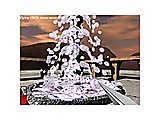 Cross-platform (desktop, mobile, console) 3D and 2D game engine. Powerful visual editor. Support for glTF, X3D, Spine and more. Fast clean code using modern Pascal. Free and open-source.
Cross-platform (desktop, mobile, console) 3D and 2D game engine. Powerful visual editor. Support for glTF, X3D, Spine and more. Fast clean code using modern Pascal. Free and open-source.
 A minimal-footprint terminal (and shell too I guess) for OpenGL 3.3
A minimal-footprint terminal (and shell too I guess) for OpenGL 3.3
 UltraGrid is a software for video transmission over networks in high quality but with low latency (as low as 83ms). It allows high-definition streams (PAL/NTSC, HD, 2K, 2160p, iHDTV, QuadHD, SuperHD, 4K video). It supports SAGE, OpenGL and SDL displays, DXT-compression per GLSL, JPEG compression via CUDA, permits to utilize HDMI and HD-SDI cards, system audio or JACK sinks, and even provides 3D support.
UltraGrid is a software for video transmission over networks in high quality but with low latency (as low as 83ms). It allows high-definition streams (PAL/NTSC, HD, 2K, 2160p, iHDTV, QuadHD, SuperHD, 4K video). It supports SAGE, OpenGL and SDL displays, DXT-compression per GLSL, JPEG compression via CUDA, permits to utilize HDMI and HD-SDI cards, system audio or JACK sinks, and even provides 3D support.
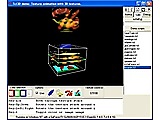 Tcl3D provides OpenGL bindings for TCL scripts. It's a SWIG-generated wrapper for 3D rendering using OpenGL, or alternatively SDL, OpenSceneGraph, Open Dynamics Engine or Nvidia Cg. It provides custom extensions like gauge drawing and various utility functions on top.
Tcl3D provides OpenGL bindings for TCL scripts. It's a SWIG-generated wrapper for 3D rendering using OpenGL, or alternatively SDL, OpenSceneGraph, Open Dynamics Engine or Nvidia Cg. It provides custom extensions like gauge drawing and various utility functions on top.
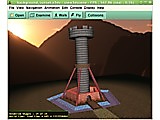 view3dscene is a viewer for glTF, X3D, Spine JSON and all other model formats supported by Castle Game Engine (3DS, MD3, Wavefront OBJ, Collada, sprite sheets in Starling and Cocos2d formats). It supports viewing the scene in the "Examine" mode and walking in the virtual world with features such as collision detection and gravity. Rendering is done using OpenGL. Many advanced 3D graphic effects are available, like mirrors (flat and through cube environment mapping), shadows (shadow maps and sh
view3dscene is a viewer for glTF, X3D, Spine JSON and all other model formats supported by Castle Game Engine (3DS, MD3, Wavefront OBJ, Collada, sprite sheets in Starling and Cocos2d formats). It supports viewing the scene in the "Examine" mode and walking in the virtual world with features such as collision detection and gravity. Rendering is done using OpenGL. Many advanced 3D graphic effects are available, like mirrors (flat and through cube environment mapping), shadows (shadow maps and sh
 Boron is an interpreted, prototype-based, scripting language similar to Rebol. The interpreter and datatype system is a C library useful for building domain specific languages embedded in C/C++ applications.
Boron is an interpreted, prototype-based, scripting language similar to Rebol. The interpreter and datatype system is a C library useful for building domain specific languages embedded in C/C++ applications.
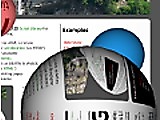 a javaScript library improving html/css web pages with 3D/2D GPU graphic acceleration (WebGL and HTML5-Canvas). It animates CSS formatted HTML 5 elements and 3D objects designed with a 3D program showing integrated scenes with hidden surface handling, lighting, and shadows. Features: parallax scrolling, accelerated motion in 2D and 3D, 3D rotating, mapping of HTML elements on 3D objects, custom shaders, graceful degradation on devices that do not provide full WebGL performance, HTML5 2D canva
a javaScript library improving html/css web pages with 3D/2D GPU graphic acceleration (WebGL and HTML5-Canvas). It animates CSS formatted HTML 5 elements and 3D objects designed with a 3D program showing integrated scenes with hidden surface handling, lighting, and shadows. Features: parallax scrolling, accelerated motion in 2D and 3D, 3D rotating, mapping of HTML elements on 3D objects, custom shaders, graceful degradation on devices that do not provide full WebGL performance, HTML5 2D canva
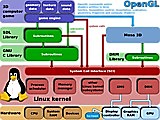 Mesa 3D is a collection of graphics libraries and drivers that implement hardware-accelerated OpenGL. It comes with its own software emulation fallback driver though. Besides OpenGL and OpenGL ES, it implements OpenVG and EGL, but also allows for Direct3D interfaces.
Mesa 3D is a collection of graphics libraries and drivers that implement hardware-accelerated OpenGL. It comes with its own software emulation fallback driver though. Besides OpenGL and OpenGL ES, it implements OpenVG and EGL, but also allows for Direct3D interfaces.
 Conquest is a top-down, real time space warfare game. It was originally written in RATFOR for the VAX/VMS system in 1983 by Jef Poskanzer and Craig Leres. I spent incredible amounts of time playing this game with my friends in the terminal labs at college, and when I actually had a multi-user system running at home (Unixware) I decided to try and translate/port the code to C in Unix. This was in the early to mid 1990's. Of course, over the years many things have changed. Today, Conquest is a t
Conquest is a top-down, real time space warfare game. It was originally written in RATFOR for the VAX/VMS system in 1983 by Jef Poskanzer and Craig Leres. I spent incredible amounts of time playing this game with my friends in the terminal labs at college, and when I actually had a multi-user system running at home (Unixware) I decided to try and translate/port the code to C in Unix. This was in the early to mid 1990's. Of course, over the years many things have changed. Today, Conquest is a t
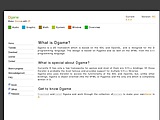 Dgame is a 2D framework which is based on SDL and OpenGL, and intended for the D programming language. Its overall design is based on Pygame and took further inspiration from SFML for C++. It provides an easy API for window management, implementing a main game loop with event handling and termination, framerate control, font loading, sprites, tile and image control, shape drawing, audio support, and OpenGL configuration.
Dgame is a 2D framework which is based on SDL and OpenGL, and intended for the D programming language. Its overall design is based on Pygame and took further inspiration from SFML for C++. It provides an easy API for window management, implementing a main game loop with event handling and termination, framerate control, font loading, sprites, tile and image control, shape drawing, audio support, and OpenGL configuration.
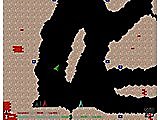 Galaxy Forces V2 is a classic 2D side-scrolling game inspired by Gravity Forces on Amiga. It allows up to 8 players, involves shooting enemy space ships and either transporting cargo, point races against opponents, or shoot-everything scoring. There are 50 official levels and a map editor, and it runs on Linux, Windows and Mac.
Galaxy Forces V2 is a classic 2D side-scrolling game inspired by Gravity Forces on Amiga. It allows up to 8 players, involves shooting enemy space ships and either transporting cargo, point races against opponents, or shoot-everything scoring. There are 50 official levels and a map editor, and it runs on Linux, Windows and Mac.
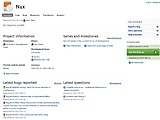 Nux is a OpenGL-based widget toolkit, with some functional resemblence to Gtk+. It's developed and used by Ubuntus Unity. It's comprised of three libraries: NuxCore for types/math/color/urility functions, NuxGraphics abstracts the rendering and canvas interaction, and Nux itself providing the widgets atop.
Nux is a OpenGL-based widget toolkit, with some functional resemblence to Gtk+. It's developed and used by Ubuntus Unity. It's comprised of three libraries: NuxCore for types/math/color/urility functions, NuxGraphics abstracts the rendering and canvas interaction, and Nux itself providing the widgets atop.
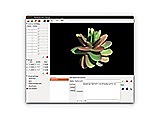 Functy is a 3D graphics generation tool. It plots cartesian, spherical or parametric curve functions. It allows altering their parameters for immediate redraws to explore 3D function results. It utilized GPU functions entirely for visualization.
Functy is a 3D graphics generation tool. It plots cartesian, spherical or parametric curve functions. It allows altering their parameters for immediate redraws to explore 3D function results. It utilized GPU functions entirely for visualization.
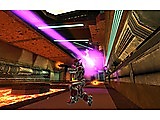 Red Eclipse is a first person arena shooter, suitable for casual gaming. It's built on Cube Engine 2 and runs on all major platforms. It has a few built-in game modes, adaptable settings, comes with a level editor, and lots of community-maintained modifications or patchsets.
Red Eclipse is a first person arena shooter, suitable for casual gaming. It's built on Cube Engine 2 and runs on all major platforms. It has a few built-in game modes, adaptable settings, comes with a level editor, and lots of community-maintained modifications or patchsets.
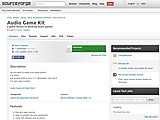 AGK is a easy to learn and embed C++ toolkit for writing games. It utilizes Boost, provides many API classes and functions, 3D sound features, integration with screen readers (like JAWS) or eSpeak synthesizer or MS Speech API, NVDA, Window Eyes, system access, INI-style configuration, console I/O, an ready to use game menu, OpenGL and built-in window management, hashing functions, number conversion, and a custom memory manager, and an interpreter for AngelScript.
AGK is a easy to learn and embed C++ toolkit for writing games. It utilizes Boost, provides many API classes and functions, 3D sound features, integration with screen readers (like JAWS) or eSpeak synthesizer or MS Speech API, NVDA, Window Eyes, system access, INI-style configuration, console I/O, an ready to use game menu, OpenGL and built-in window management, hashing functions, number conversion, and a custom memory manager, and an interpreter for AngelScript.
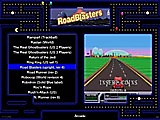 Attract-Mode is a GUI for game system emulators such as MAME, MESS and Nestopia. It abstracts the operating system, can be navigated per joystick, gamepad and spin dial. It's thus suitable for cabinet installations, works on Linux, OS X and Windows; is scriptable per Squirrel, provides a configurable menu, screensaver and background music, has a convenient history and play or score statistics.
Attract-Mode is a GUI for game system emulators such as MAME, MESS and Nestopia. It abstracts the operating system, can be navigated per joystick, gamepad and spin dial. It's thus suitable for cabinet installations, works on Linux, OS X and Windows; is scriptable per Squirrel, provides a configurable menu, screensaver and background music, has a convenient history and play or score statistics.
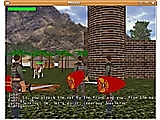 Mundo is a 3D massive-multiplayer online role playing game, with basic graphics. It's multi-platform, based on GPLDevKit and OpenGL and written in FreePascal. The current map provides 1 million square meters, including caves and hell-style scenes, 17 non-player characters, 21 monster types, 58 items, and around 100 quests.
Mundo is a 3D massive-multiplayer online role playing game, with basic graphics. It's multi-platform, based on GPLDevKit and OpenGL and written in FreePascal. The current map provides 1 million square meters, including caves and hell-style scenes, 17 non-player characters, 21 monster types, 58 items, and around 100 quests.
 Unvanquished is a first person shooter with elements for realtime-strategy games. It's derived from Tremulous, and adapted to the Deamon-Engine. It pitches adaptable aliens against technologically advanced humans, with either team being playable. Humans get credit for new weaponry, whereas aliens get an evolution score to progress.
Unvanquished is a first person shooter with elements for realtime-strategy games. It's derived from Tremulous, and adapted to the Deamon-Engine. It pitches adaptable aliens against technologically advanced humans, with either team being playable. Humans get credit for new weaponry, whereas aliens get an evolution score to progress.
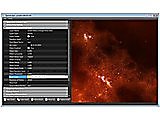 Spacescape creates seamless star/space and nebula background images. It's built on Qt and Ogre3D for rendering.
Spacescape creates seamless star/space and nebula background images. It's built on Qt and Ogre3D for rendering.
|